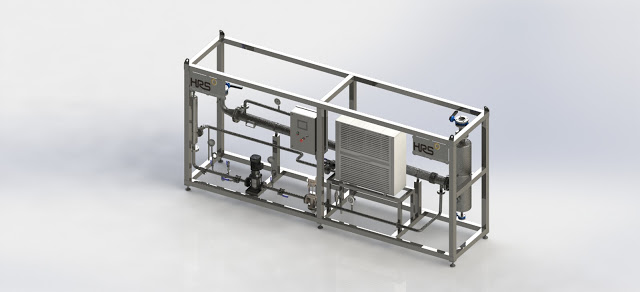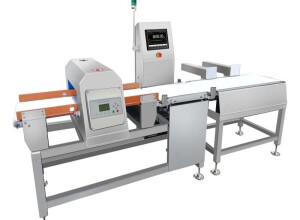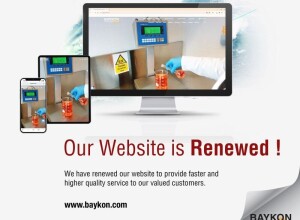The use of biomethane as a transport fuel is at once both the most exciting prospect for the further development of biogas in the United Kingdom, and also the part of the industry that has been most disappointing in terms of its development to date.
A report published last year(1) showed that using biomethane could reduce the well-to-wheel (WTW) CO2e emissions for road transport by between 35% and 88% depending on the vehicles and lifecycle analysis used. The European Biogas Association also points out that, ‘In addition to using pure biomethane in vehicles, a smart cost-efficient way to reduce greenhouse gas (GHG) emissions to meet national targets is by blending it with natural gas. For example, using a blend with 20% biomethane can yield GHG emission savings of 39% when compared to gasoline on the well-to-wheel basis.’
Improving air quality:
This is welcome news, particularly as the need to find a green alternative to diesel vehicles has never been greater. Nitrogen dioxide pollution, mostly produced by diesel vehicles, has been illegally high in most urban parts of Britain since 2010, and UK air pollution is linked to 40,000 early deaths each year. Aside from the air quality benefits, substituting diesel for UK-produced biomethane improves energy security and reduces our reliance on imports of natural gas and other petroleum products from volatile parts of the world such as Qatar.
Overcoming barriers to success:
In the past, barriers to greater uptake of biomethane as a transport fuel have included a lack of available vehicles and constrained biomethane production, but these arguments no longer hold true. Over the past few years, biomethane has seen the biggest growth of any sub-sector of the UK’s booming AD industry and 87 biomethane plants have now come on stream, generating almost 64,000m3/hour of home-grown green gas(2). In addition, most vehicle manufacturers now have a dedicated right-hand drive gas engine in their range, and more fleet operators and bus companies than ever before are making the switch from diesel to gas. But if the vehicles and production network exist, and the benefits of using biomethane are so clear cut, why do we not have a network of filling stations across the country (rather than less than 20) and tens of thousands of vehicles on the road, instead of a few hundred?
The remaining barriers to greater uptake revolve around the logistics of fuel supply, the relative costs of upgrading biogas to biomethane, and a lack of clear government policy. These last two factors are clearly related, and although various organisations and schemes have been charged with moving the situation forward over the last eight years, there has been little real action. Past support via the Renewables Obligation (RO), the Feed-in Tariff (FIT) and the Renewable Heat Incentive (RHI) has provided greater incentive for turning biogas into electricity or injecting biomethane into the gas grid, than the Renewable Transport Fuels Obligation (RTFO) has provided for turning biogas into a transport fuel. The ‘double counting’ of Renewable Transport Fuel Certificates for biogas from waste sources also skews demand and effectively makes it uneconomic for crop-fed plants to take advantage of the transport market.
If green gas is to fulfil its potential, it needs clear policy indicators from government which give investors sufficient confidence and make using biomethane as a transport fuel at least as financially attractive as other potential uses.
Opportunity knocks:
However, there could finally be some light at the end of the tunnel – the Department for Transport’s recent reforms to the RTFO now require 12.4 per cent of all fuels to be derived from renewable sources by 2032. This provides a great opportunity for the AD industry and could be just the impetus required to see biomethane finally take centre stage. Indeed, the Anaerobic Digestion and Biogas Association (ADBA) states: ‘The reforms to the RTFO should help stimulate uptake of biomethane as a transport fuel and create a positive investment environment beyond 2020.’
Maximising heat:
The reforms to the RTFO are expected to generate a further increase in the number of biomethane projects coming on stream in the next few years – in fact, 45 projects currently have planning permission, while a further 10 have submitted a planning application2. However, in order to maximise both profits and plant efficiency, any prospective biomethane developer should ensure they are taking full advantage of the heat generated within the AD process, and that it is being put to best use.
Heat plays a key role in various biogas upgrading methods – cooling and condensation may be used to remove water or siloxanes from biogas, while refrigeration may be used in CO2 washing systems. Cryogenic upgrading technologies, meanwhile, use the different boiling and sublimation points of different components of biogas to freeze CO2 and evaporate nitrogen. All of these processes can be made more efficient if existing sources of heating and cooling in a plant are utilised through heat exchangers. Choosing the correct heating and cooling technology, and selecting the right heat exchanger for your project, is therefore vital to the success of the biogas upgrading process.
When investigating any biogas-to-biomethane upgrading project, you should ask potential technology suppliers how their heating and cooling systems work. If any heat is being wasted in the system, an experienced heat exchanger supplier would be happy to come on board to investigate the potential to improve system efficiencies, helping to fuel the next generation of gas vehicles.
Matt Hale, International Sales and Marketing Director, HRS Heat Exchangers.
1 - Report by Ricardo Energy & Environment for Transport & Environment (T&E), February 2016
2 - Anaerobic Digestion Market & Policy Report (ADBA), November 2017





























Interested? Submit your enquiry using the form below:
Only available for registered users. Sign In to your account or register here.